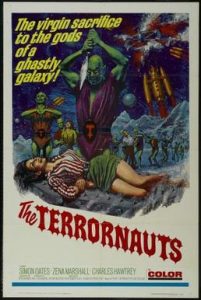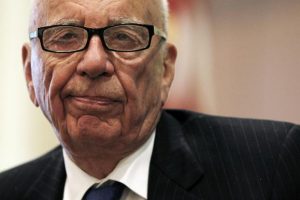
© Vintage Classics
The death of Martin Amis on May 19th this year brought forth a glut of media tributes that often included the claim he was the ‘greatest British novelist of his generation’. I have to say that’s not something I agree with. However, it did remind me that one generation before Martin Amis’s heyday, his father, Kingsley Amis, was also commonly feted as a major figure in British letters.
Neither was I greatly impressed by Amis Senior, although that’s no doubt an unfair opinion because, until recently, I’d read only one literary work by him. (I have also read a couple of Kingsley Amis novels that were classified as ‘genre’ fiction, and therefore not worthy of serious consideration by Britain’s snobby literary establishment, but I’ll talk about those later.) That book was his 1954 satire Lucky Jim, which I found awkwardly dated and, for a satire, not very funny. Yes, all literature is of its time, but good literature doesn’t feel dated the way that Lucky Jim did. And most books I’ve read by Anthony Burgess, William Golding and Graham Greene, contemporaries of Amis whom I do admire, don’t feel dated that way either.
That said, I was always keen to read Amis’s 1986 novel The Old Devils. Partly this was because its basic scenario, about a bunch of boozy, cantankerous Welshmen and Welshwomen refusing to grow old gracefully and instead doing so disgracefully, sounded like one I could identify with. Various people have accused me of being boozy and cantankerous and disgraceful in my old age too. Admittedly, I’m not Welsh, but I’m from an Irish-Scottish background, which is surely the next best thing. And in its day, The Old Devils received much praise. It prompted Anthony Burgess, for example, to say of Amis: “There is one old devil who is writing better than he ever did.” And in its year of publication, The Old Devils won the Booker Prize. So it had to be good. Right?
Well I’ve just read the book, and… Wrong.
But first, here’s the plot, such as it is. A small, tight-knit group of married couples live in the town of Dinedor in southwest Wales. There’s the frail, beleaguered literary scholar Malcolm and his wife Gwen; the greatly-overweight retired engineer and one-time lecturer Peter and his wife Muriel; the seriously alcoholic and panic-attack-prone restauranteur Charlie and his wife Sophie; plus a few associates. If I haven’t described the women in detail, there’s a reason for that, as we’ll see. The men spend their time in a snug-room of the local pub, the Bible and Crown. The room’s decorated with memorabilia from the Dinedor Squash Racquets Club, which they’d been members of in their long-ago primes. The women devote themselves to a circuit of get-togethers at each other’s houses where cups of coffee rapidly give way to ‘one-and-a-half-litre bottles of Soave Superiore’ and the air soon fills with a fug of cigarette smoke.
The routineness and predictability of their existence is disrupted by the return of Alun and Rhiannon. They are members of the gang who relocated decades before to London, where Alun has done very well as a TV presenter. In particular, he’s become a ‘professional Welshman’, fronting shows about his home country that paint a mythologised and caricatured picture of it, and also establishing himself as an expert on an influential Welsh poet called Brydan. (Brydan is clearly based on Dylan Thomas, whom Amis once dismissed as “an outstandingly unpleasant man who cheated and stole from his friends and peed on their carpets.”)
Back living in Dinedor, Alun and Rhiannon soon stir the emotional pot. Firstly, Rhiannon has a history with Peter. He ‘wronged’ her while he was a young lecturer and she a student, and he’s still tormented by guilt about it. Also, the meek Malcolm has always secretly carried a torch for her and finds his old feelings bubbling up again. But Alun’s impact is more immediately dramatic. He’s a randy old goat and, before long, his insatiable carnal hunger has him cuckolding his supposed mates left, right and centre.
And that’s about it. The book mostly held my interest for the first 200 or 250 pages – it’s nearly 400 pages long – but eventually I realised how meandering and predictable the plot was. The likely climax would involve one of the male characters popping his clogs, either Malcolm with his general infirmity, Peter with his obesity, or Charlie with his alcoholism and panic attacks. Or indeed Alun, who despite his obvious, continuing virility has been subject to brief but worrying ‘funny turns’. My prediction proved correct, but I won’t say who snuffs it at the end. Meanwhile, the female characters are sketched with a perfunctory sameness – world-weary, gossipy, bitchy, chain-smoking, wine-guzzling – and even late in the book I was having problems telling them apart and remembering which marriages they were in.
The one female character Amis draws distinctly is Rhiannon, since she’s got baggage with Peter and Malcolm, the former regretful about his past treatment of her, the latter still worshipping her. The book’s most heartfelt part is where Malcolm persuades her to go for a drive with him, around some of their old hangouts during their youth, when he was close to her and hopeful of getting closer. Needless to say, and sadly for Malcolm, Rhiannon doesn’t remember them with anything like the same clarity.
It’s here that we get a jolting reminder that these characters, for all their affairs, dissolution and bad behaviour, are actually old. Rhiannon retreats into the ladies’ toilet of a restaurant, where she gets “down to work on her falsies,” i.e., picking tomato seeds from the meal she’s just had out of her dentures: “…she straightened to her full height, shook back her hair and did her best in the way of putting on an important, haughty expression… the idea was to give herself a head start, an improved chance of facing down anyone who might presume to come barging in and find the sudden sight of an old girl with her teeth in her hand somehow remarkable, or embarrassing…”
Mind you, given the time, false teeth might not be a sign of elderliness. I’ve recently finished reading another Booker prize-winner, Douglas Stuart’s Shuggie Bain, which was published in 2020 but set like The Old Devils in the 1980s. That book’s a reminder of the astonishing fact that not so long ago, in Britain, many people believed it was desirable to get every tooth pulled out of their heads at as early an age as possible.

© From artinfiction.wordpress.com
Anyway, Amis portrays his male characters more vividly. But it’s hard to like them, especially as they’re such a moaning and reactionary shower of old farts. For one thing, they spend a lot of their time whinging about everything has changed for the worse. Now admittedly, the belief that modern life is rubbish seems an inescapable trait of growing old. Well, I should know… But you don’t feel much sympathy for them when they start discussing politics and have “a lovely time seeing who could say the most outrageous thing about the national Labour Party, the local Labour Party, the Labour-controlled county council, the trade unions, the education system, the penal system, the Health Service, the BBC, black people and youth… They varied this with eulogies of Ronald Reagan, Enoch Powell, the South African government, the Israeli hawks and whatever his name was that ran Singapore.”
Elsewhere, we hear how Alun “dreamt that Mrs Thatcher had told him that without him her life would be a mere shell, an empty husk…” That actually sounds like one of Kingsley Amis’s real-life wet dreams, as he once described the dreaded Maggie as “one of the best-looking women I had ever met… The fact that it is not a sensual or sexy beauty does not make it a less sexual beauty…”
In my view, British life did change and take a definite turn for the worse in the 1980s, with Thatcher’s Conservative government abandoning traditional industries and ushering in mass unemployment, squandering oil revenues from the North Sea, and basically marketizing and monetarising everything. The latter policy included selling off publicly-owned infrastructure to the highest bidders, the legacy of which is the terrible transport system, sewage-filled rivers and exorbitant energy bills that bedevil Britain in 2023. From Thatcher onwards, for a party that called themselves Conservatives, they weren’t very good at conserving anything, which makes Amis’s right-wing-Tory characters’ bellyaching about everything going to the dogs sound hollow. Still, Thatcher won the Falklands War in 1982 and emasculated the unions, which I suppose was good enough for them.
That brings me to my other bone of contention with The Od Devils. Its characters spend a lot of time prattling on about being Welsh, but they don’t feel very Welsh. They don’t come across like any Welsh person I’ve ever met, either on a cultural level – for instance, there’s barely a mention of the country’s beloved sport of rugby – or on a political one. Okay, they’re Tories, so you’d expect them to be dismissive of Wales’s main political traditions, exemplified by the likes of Labour’s Aneurin Bevan, Jim Callaghan and Neil Kinnock, the Liberals’ David Lloyd George, and Plaid Cymru’s Gwynfor Evans, and they carp about the ineptitude of local Labour politicians and describe the Welsh nationalists as ‘c*nts’. But you’d expect the trauma of Wales’s 1980s industrial decline – following the 1984-85 Miners’ Strike, for instance, 25,000 Welsh miners lost their jobs in pit closures – to register at least a little on their radar. It doesn’t, though.
I knew plenty of Scottish Tories back in the 1980s who, while they thought Thatcher was the bees’ knees and regarded themselves as loyal subjects of Her Majesty and the Union Jack, saw themselves too as Scottish to the core. Maybe some of this was a pose – tartan, whisky, golf, Burns’s poetry – but deep down they seemed to have a genuine love for Scotland’s traditions and fiercely supported the country in its cultural and sporting endeavours. I suspect these dual loyalties had often been forged by military experience during their youth, when they’d proudly served in Scottish regiments whilst also fighting for Britain.
But I didn’t get that feeling with Amis’s characters here. It’s like they’ve been transplanted from the English Home Counties, with Welshness slathered over them like the trappings of some prestigious club-membership they can show off and banter about, but underneath means nothing to them – unless, as with Alun, it can be turned into money. And there’s little or no talk in the book of World War II. Given the book’s setting and the characters’ ages, shouldn’t this have been a big thing for them? Wouldn’t the men have served in the Welsh regiments?
So, The Old Devils neither impressed me as a book nor convinced me as a representation of life in Wales nearly 40 years ago. Indeed, when I look at what else was on the shortlist for the Booker Prize in 1986, I find it mind-melting that this beat both Kazuo Ishiguro’s An Artist of the Floating World and Margaret Atwood’s prescient The Handmaid’s Tale to the title. And it won’t improve my opinion of Amis as a writer of mainstream literary fiction. However, I’ll qualify that by saying that as a genre writer, I’ve enjoyed his output. I highly rate both his James Bond pastiche Colonel Sun (1968) and his supernatural novel The Green Man (1968). If only old Kingsley had written more spy and ghost stories, and crime, horror and science-fiction ones too…
Meanwhile, as the antics of Alun, Malcolm, Peter and co. increasingly set my teeth on edge, I found myself thinking of something my Dad liked to say: “There’s no fool like an old fool.”

© David Smith / From the Guardian
















